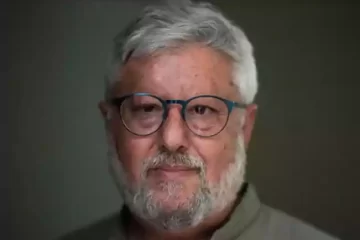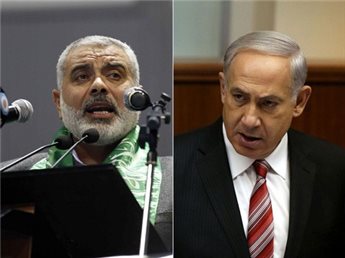Gershon Baskin feels that keeping the status quo means that Jews will not be allowed to pray on the Temple Mount for the foreseeable future and even though there is no justice in this, the reality of the sensitivity of the issue now demands that this issue be removed from the agenda until after there is peace.
This violence is horrendous, senseless and leaves us all, on both sides of the conflict, with a feeling of hopelessness. Geographical boundaries of fear have been re-erected in Jerusalem and ethnic-national- religious boundaries of anger and hatred stemming from fear have been erected throughout the country between Jews and Arabs.
Most of the violence – the knifings and vehicular assaults have taken place in Jerusalem. Most of the knifings have been perpetrated by minors from east Jerusalem, under the age of 18. Most of the throwing of stones and firebombs at clash points around the West Bank has been done by youngsters also, with a notable very high number of girls and young women joining in. So far (Wednesday) 27 Palestinians have been killed – among them the terrorists and protestors – and seven Israelis have been killed by Palestinian attackers.
Any Palestinian who picks up a knife with the intention to kill an Israeli has to know from the outset that it is a suicide mission. The chances of coming home alive are next to nil. Most of the knifings have been carried out by people who are not religious fanatics. It is not the calling of Allah which is driving them to the madness of murder and suicide. What drives a young person to take such a radical step? These are not people who listen to their leaders, or who even have the slightest respect for them. They are the Facebook and Whatsapp generation.
They see the films on Youtube and read how their friends and society glorify those who are “killed for Palestine.” It is a vicious cycle which is very difficult to break and almost impossible to control.
When I was in Ramallah last week for a whole day, I saw teenagers leaving school and walking towards the Beit El junction in the north of Ramallah. They were walking in small groups; it looked as if they were going to a football game. They took kaffiyehs out of their school bags, they put the bags back on their backs and then wrapped their faces with the kaffiyehs. They looked at each other and helped each other to cover their identities as they went into the traffic circle to throw stones at the Israeli soldiers, knowing that they could end up getting shot and maybe killed. It appeared to me that there was no fear in their behavior. In talking to some of them, it was clear that they felt that they were doing their national duty for Palestine and for al-Aksa.
I came home with my Palestinian taxi driver later that night. He lives on the corner of the road that divides Beit Hanina from Pisgat Ze’ev – the place where two young Palestinians knifed two young Israelis. He has a 15-year-old son who goes to school 300 meters away from his home. He told me that for the past two weeks he has not let his son out of the house. This sounds like the responsible thing to do. He said that he refuses to allow him to go with his school friends after school to throw stones and is also afraid that angry mobs of Jews will see his son and lynch him. This man is no less loyal to Palestine than anyone else who loves his people and country in east Jerusalem. How long can you keep him at home, I asked? He said as long as this madness continues.
I think that there are things that can be done, other than using more force, to return the calm and get us back on the path of searching for a way out of this conflict.
The most dangerous thing now is that any single event can lead us down the slippery slope to the point of no return and another round of horrific violence, death and destruction. The only sure thing is that when Israelis are killed, Palestinians are killed as well (or vice versa – whichever way you want to say it). There has never been a military solution to this conflict and there is no military solution now either.
The end of this conflict will come only when both sides reach an agreement that respects the legitimacy of the other side within defined borders of a territory on which each side expresses its identity. It is very difficult when both sides believe deeply that there is no partner for peace on the other side. The total mistrust between Israelis and Palestinians is painfully evident in any attempt in the social media to conduct a dialogue. Each side has its own narrative, its own version of the events, its own story of who started and who is responsible and its own description of right and wrong and of justice.
This will not end now unless the solution includes dealing with Jerusalem and the holy sites within the city. With new Israeli government decisions to confront the eroding security situation in Jerusalem, it is essential that we finally comes to terms with the reality that Palestinian east Jerusalem is occupied territory and that Jerusalem is a divided city. Frustration and anger hits new highs – Jerusalem Mayor Nir Barkat has proposed to impose a closure on the West Bank and on Palestinian east Jerusalem. This is the same man who wakes up every morning and goes to sleep every night reciting the mantra that Jerusalem is a united city, the eternal capital of the State of Israel and the Jewish people.
What? You mean that doesn’t include 350,000 Palestinians who live under Israeli control without citizenship and equal rights? Yes, occupation exists in east Jerusalem too. Maybe when people begin to understand that Palestinian east Jerusalem is also part of the occupied territories and must become the capital of the state of Palestine, we will see the beginning to an end to terrorism, an end to the occupation, and an end to the conflict and maybe even peace one day.
There will never be an end to the conflict without Jerusalem becoming the capital of two states. This should be axiomatic but if you seriously believe that Jerusalem belongs only to the Jews then the reality of Jerusalem being a divided city is totally hidden from you. I don’t want Jerusalem to be physically divided – I love this city too much to see it destroyed with walls, fences and barbed wire. The only way for Jerusalem to be the capital of Israel and Palestine is for it to be shared. There are various models for sharing Jerusalem – the most likely involves sovereignty being recognized on the basis of demography in an open city. There are almost no common areas in Jerusalem.
Every neighborhood is either Israeli or Palestinian and therefore determining which state will have sovereignty over which areas is not very difficult. I will not go into the depth of describing the models here. But in dealing with the current crisis, a path to move toward finding understanding on both sides of conflict in Jerusalem is by beginning to adopt some of the symbolic attributes of sovereignty for Palestinians in Jerusalem. This was done in the past, in better days and it was quite effective then. It includes clear understandings with the Wakf on the Temple Mount/Al Aksa that if they do their job and prevent stone throwing and other forms of violence, then the Israeli police will not enter the compound. In the past Palestinian Preventive Security personnel were deployed on the Mount. They were also deployed in the Old City and in Palestinian neighborhoods of east Jerusalem.
Keeping the status quo means that Jews will not be allowed to pray on the Temple Mount for the foreseeable future. There is no justice in this but the reality of the sensitivity of the issue now demands that this issue be removed from the agenda until after there is peace.


